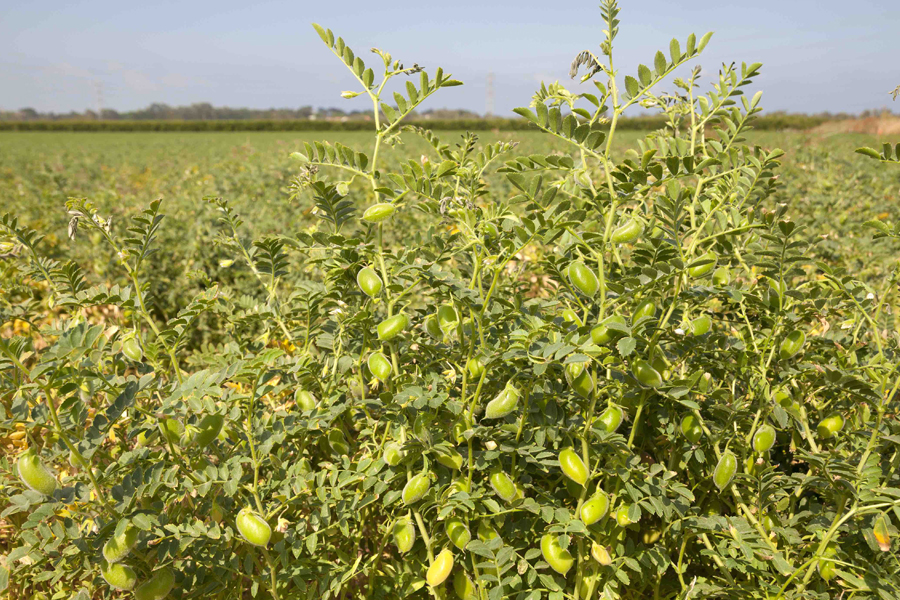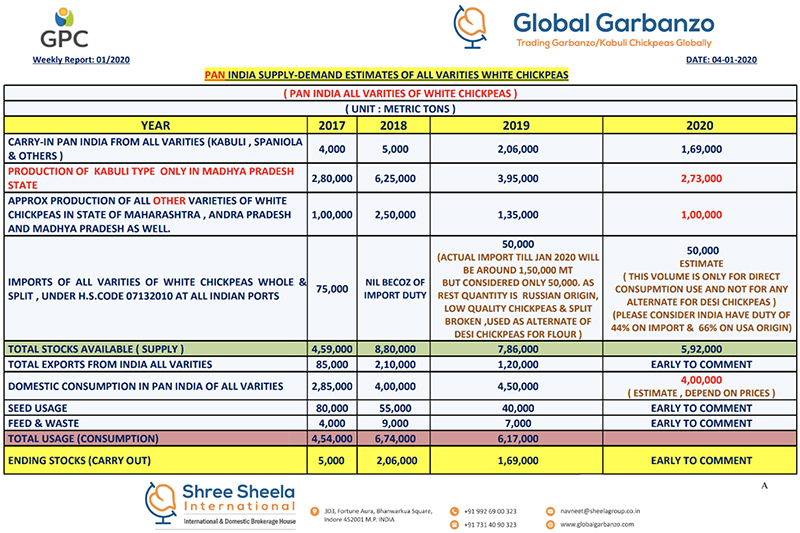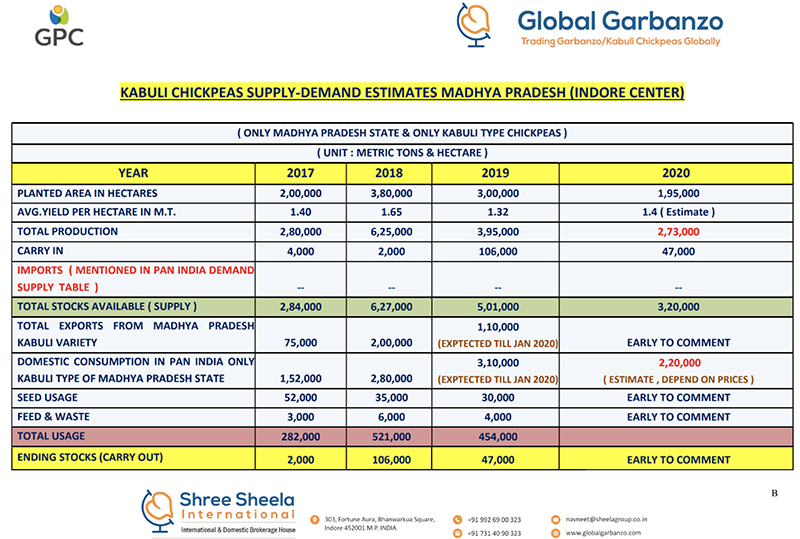January 9, 2020
Lower grower prices saw fewer chickpeas seeded this rabi season.


Information on this report has been provided by an external source and should be verified independently.
This rabi season, chickpea plantings are down compared to a year ago. In Madhya Pradesh, the major kabuli chickpea growing state, 195,000 hectares were seeded to kabuli chickpeas, compared to 300,000 in 2019 and the record high of 380,000 hectares in 2018. The reduction in the area is due primarily to low grower prices for the second consecutive year. Additionally, good soil moisture levels were also a factor, as it held out the promise of good yields for wheat, a crop that was made even more enticing to growers by the government’s Minimum Support Price.
In a normal year, nearly 80% of India’s chickpea crop is seeded from October 15 to January 15. But this year, the major kabuli chickpea growing state of Madhya Pradesh saw continuous rains from mid-October into the first week of November, resulting in planting delays of 20 to 25 days. This will see the bulk of the harvest take place in the second half of March, whereas normally it would begin in late February. The late seeding will also likely result in lower yields and smaller caliber sizes as the plants will enter the podding stage at a time of elevated temperatures.
India enters the 2020 campaign with a smaller carry-in than it did in 2019. For India overall, carry-in is projected at 169,000 MT, down from 206,000 MT in 2019. In the state of Madhya Pradesh, where 95% of India’s chickpea exports originate, the decrease in carry-in is even greater, from 106,000 MT in 2019 to 47,000 MT in 2020. With the smaller carry-in, India’s chickpea supplies should cease to be burdensome.
Although it is still too early to tell with certainty, India’s chickpea exports may hit 110,000 MT in 2020. Much will depend, however, on price and availability at other origins. In the case of large caliber chickpeas, India’s top competitor is Mexico. If Mexico’s prices are higher than India’s, then Middle East markets are likely to buy from India. For the smaller calibers, there are several other origins to choose from, and buyers can shop around for the best deal.


Disclaimer: The opinions or views expressed in this publication are those of the authors or quoted persons. They do not purport to reflect the opinions or views of the Global Pulse Confederation or its members.